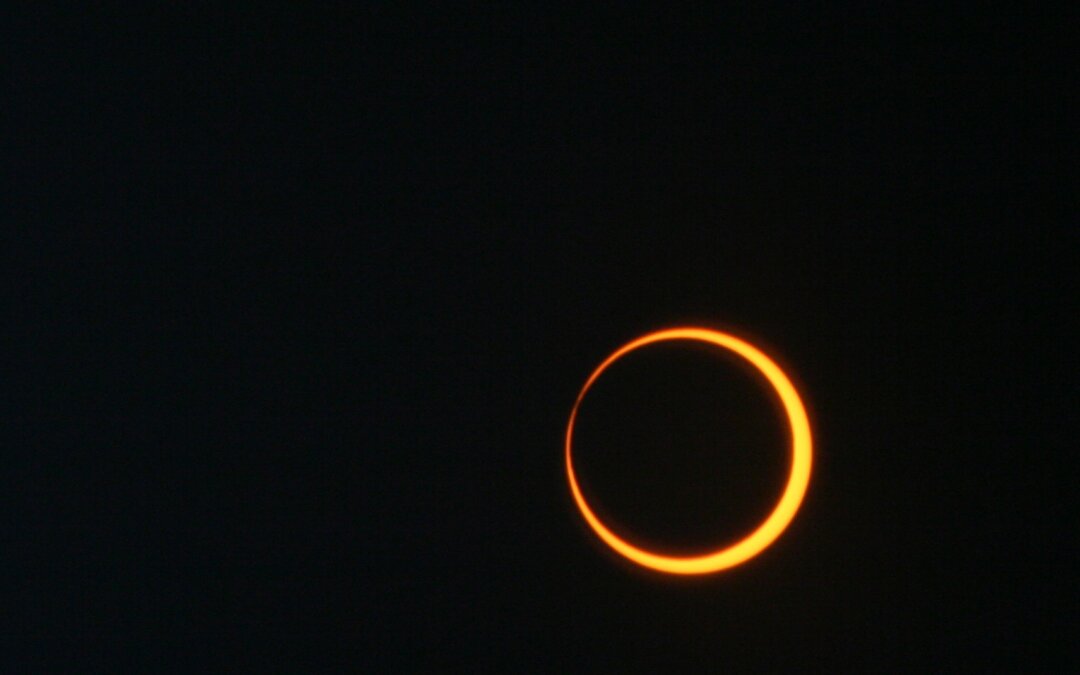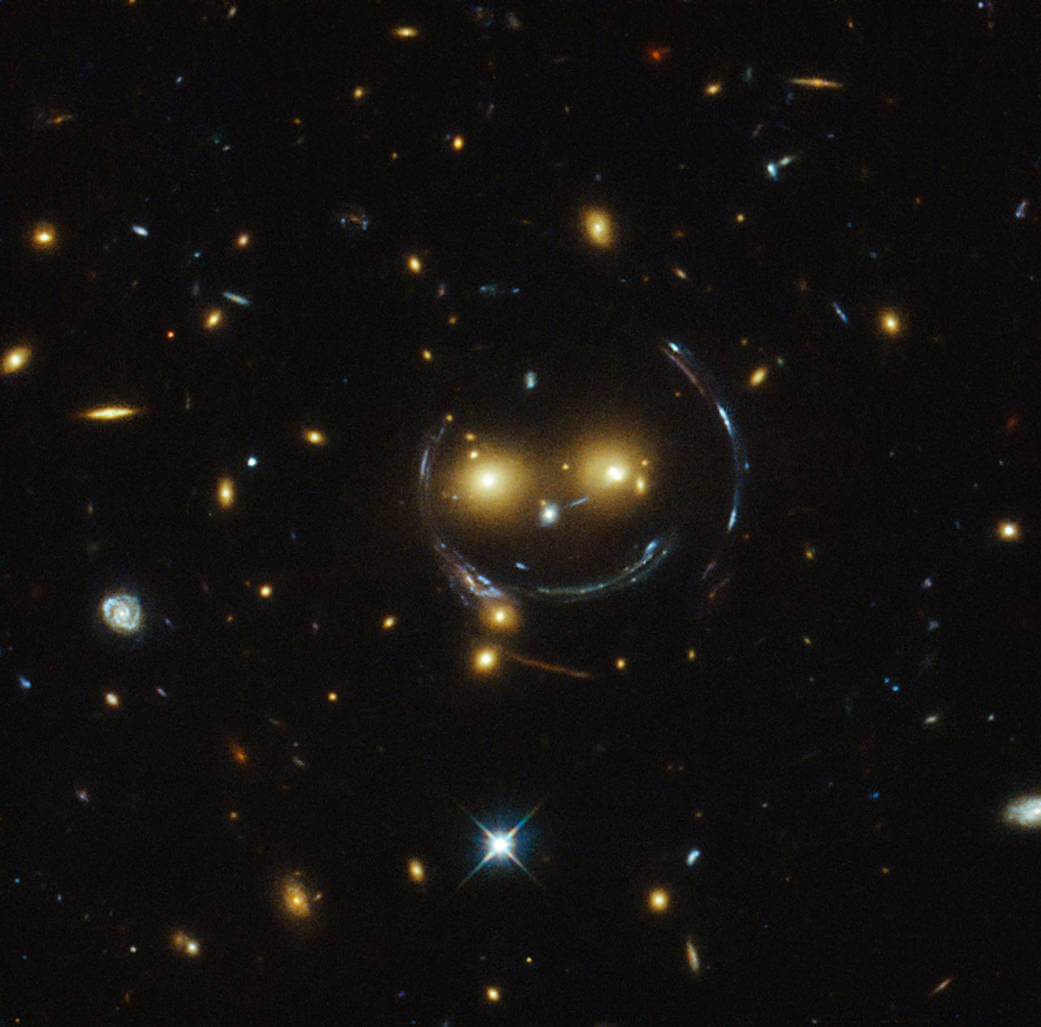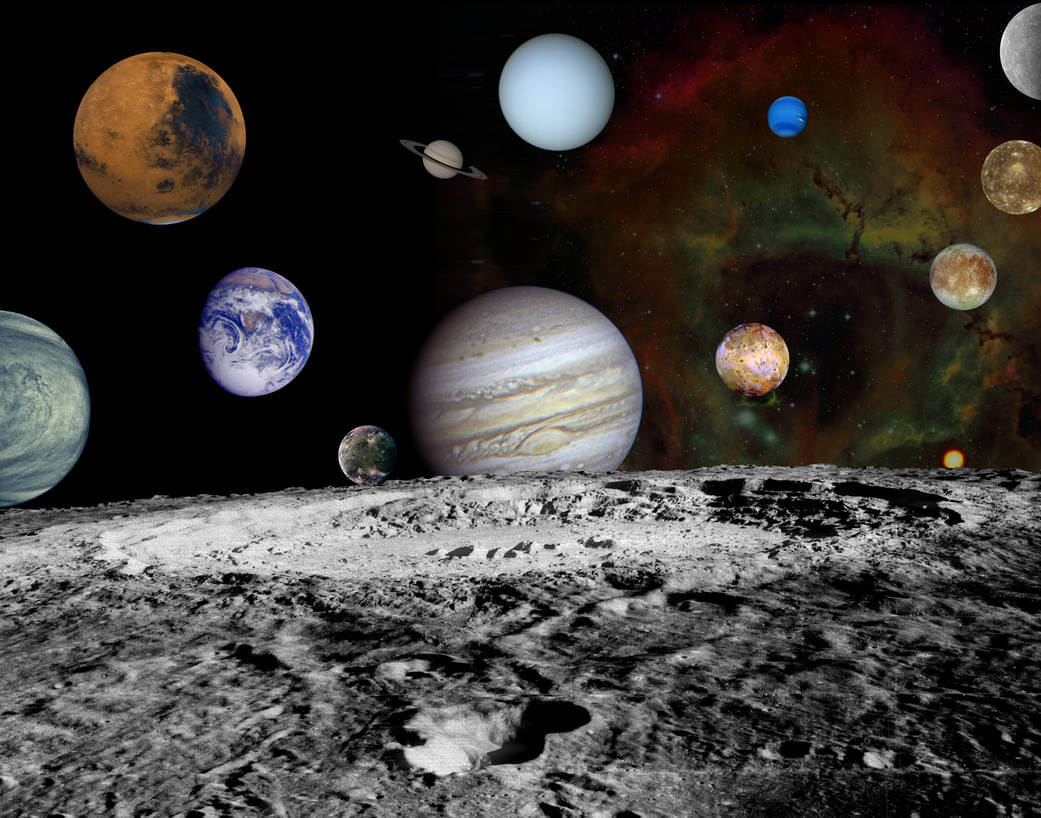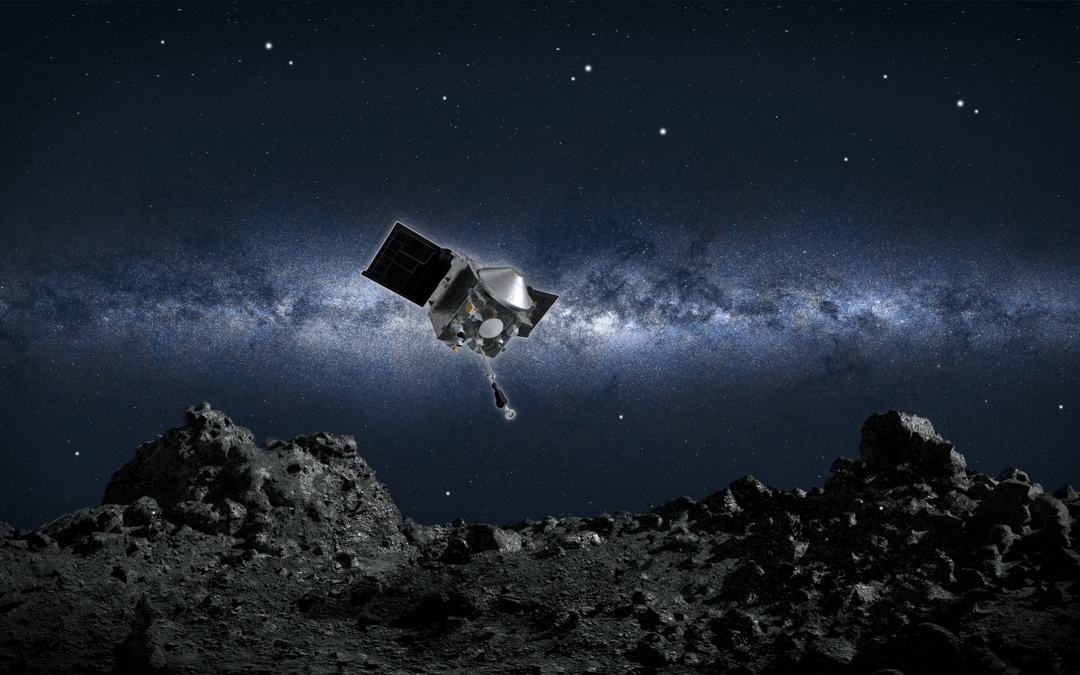A new month brings a new crop of celestial wonders for astronomers everywhere to view. This September brings a flurry of nebulae and star clusters with it, meaning you’ll be able to get your fill of stars in all stages of life this month! We’ve got some of each for you to find with your Unistellar Telescope, including one cluster with a curiously missing centerpiece.
Many of these September sights lie in the constellation Cygnus the Swan, which hosts a rich tapestry of deep sky objects due to its location on the galactic plane. This stellar pattern is one of the Northern hemispheres’ high-in-the-sky Autumn gems, but is still visible for some Southern hemisphere observers (it will be quite low on the horizon for those at very Southern latitudes). So let’s dive into the Swan and its neighbors to visit the fascinating targets that this month has to offer.
All-Level Targets
These bright objects are easy for anyone to observe, and many are visible from both hemispheres!
Albireo
Turn your telescope to the head of Cygnus the Swan, the gleaming double star Albireo. The two stars that make up this pair appear with different colors through a telescope, as one is much hotter than the Sun and one much cooler.
Because this star is so bright, you can choose whether or not to use Enhanced Vision. If you want to see the clear separation between the stars, you may instead use the “Edit” button at the bottom of your live view screen to reduce the Gain and Exposure time of the image. This will allow you to better tell the stars apart.
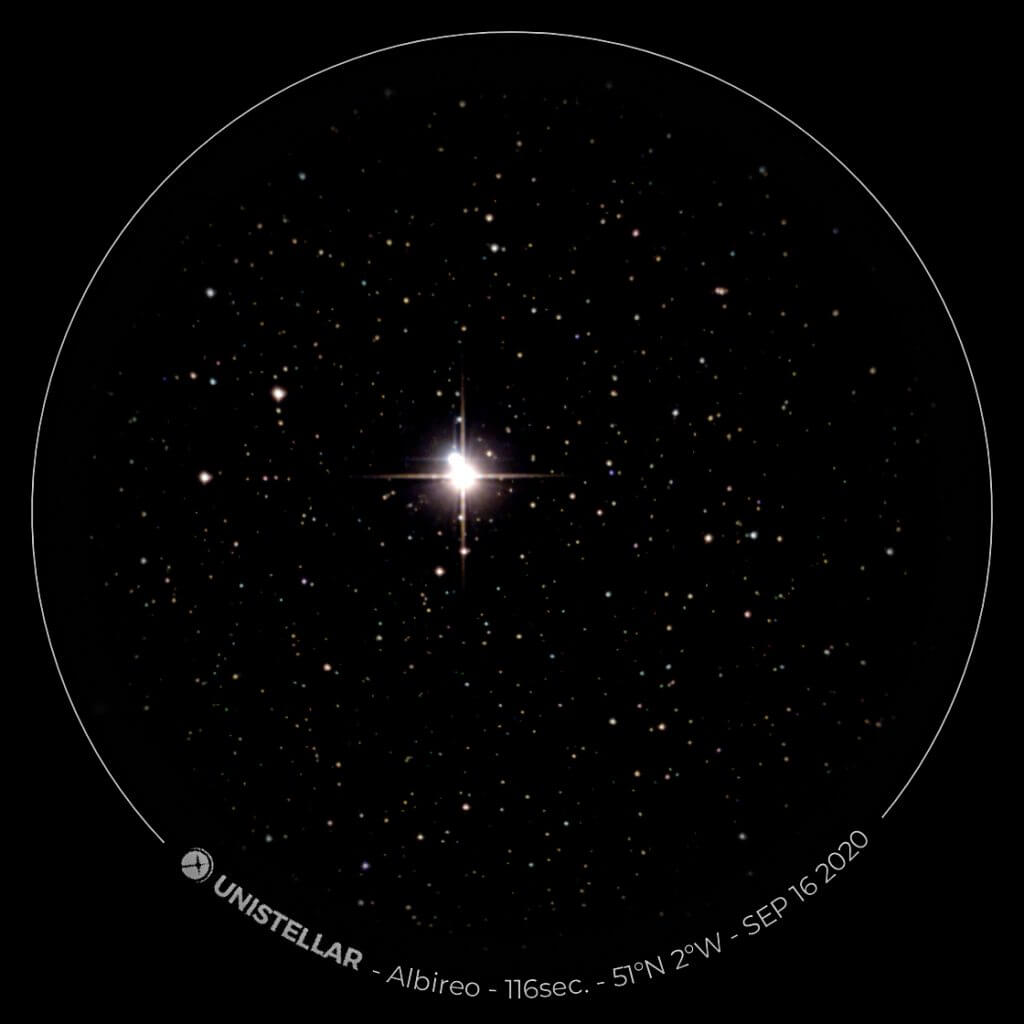
Albireo captured by David Rowe with Enhanced Vision.
M39
Find this open cluster in the constellation of Cygnus. It’s near the bright star Deneb, the tail of the Swan, which can be helpful for locating the cluster. M39 is part of both the Northern Cross and the Southern Triangle – two of the most well-known asterisms in each hemisphere!
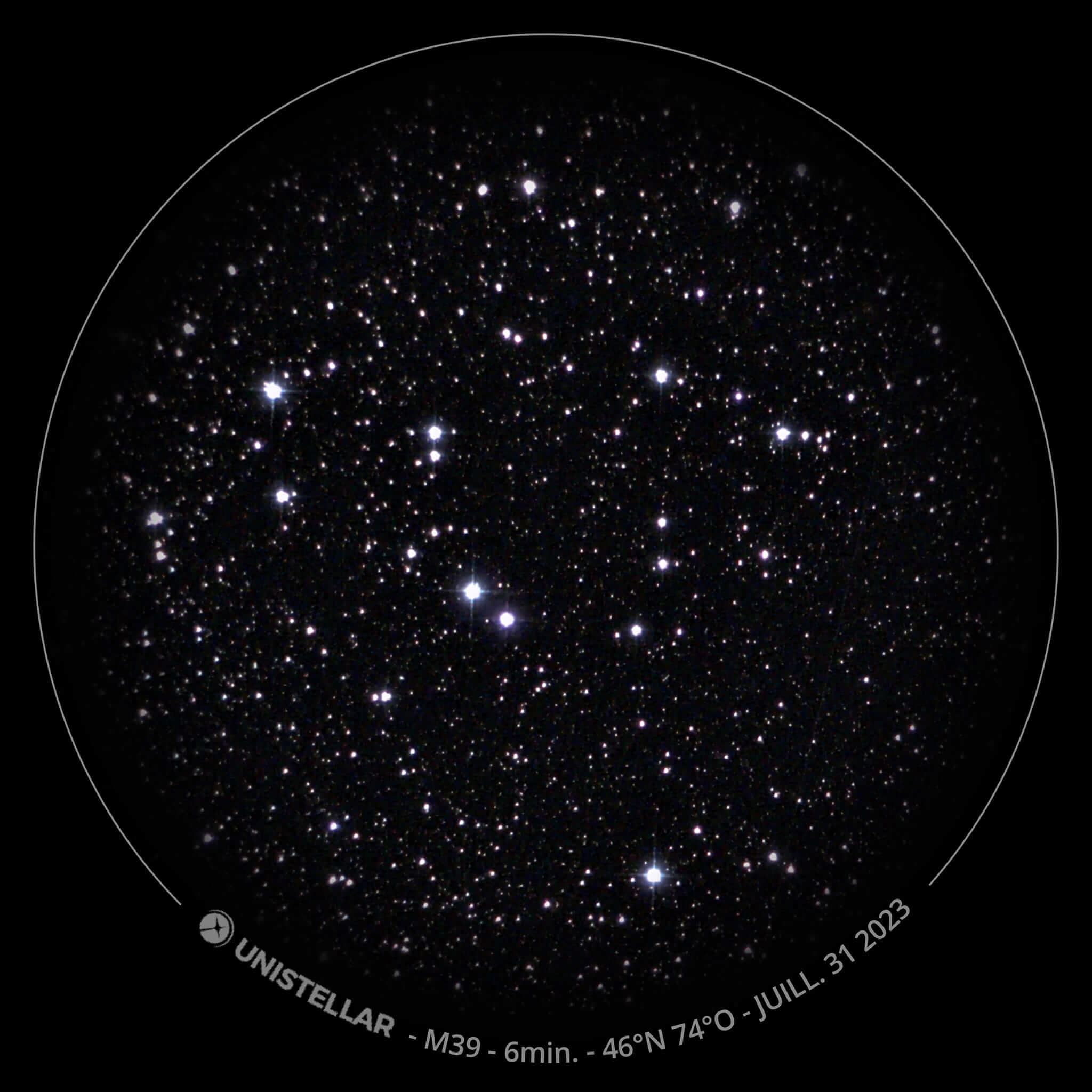
M39 imaged by Unistellar observer Michel Dubeau.
Cocoon Nebula
Sitting at the edge of Cygnus the Swan, the folds of the Cocoon Nebula shelter a region of young and still-forming stars that burns brightly. Peer closely into this forge of star creation and imagine the fiery conditions within.
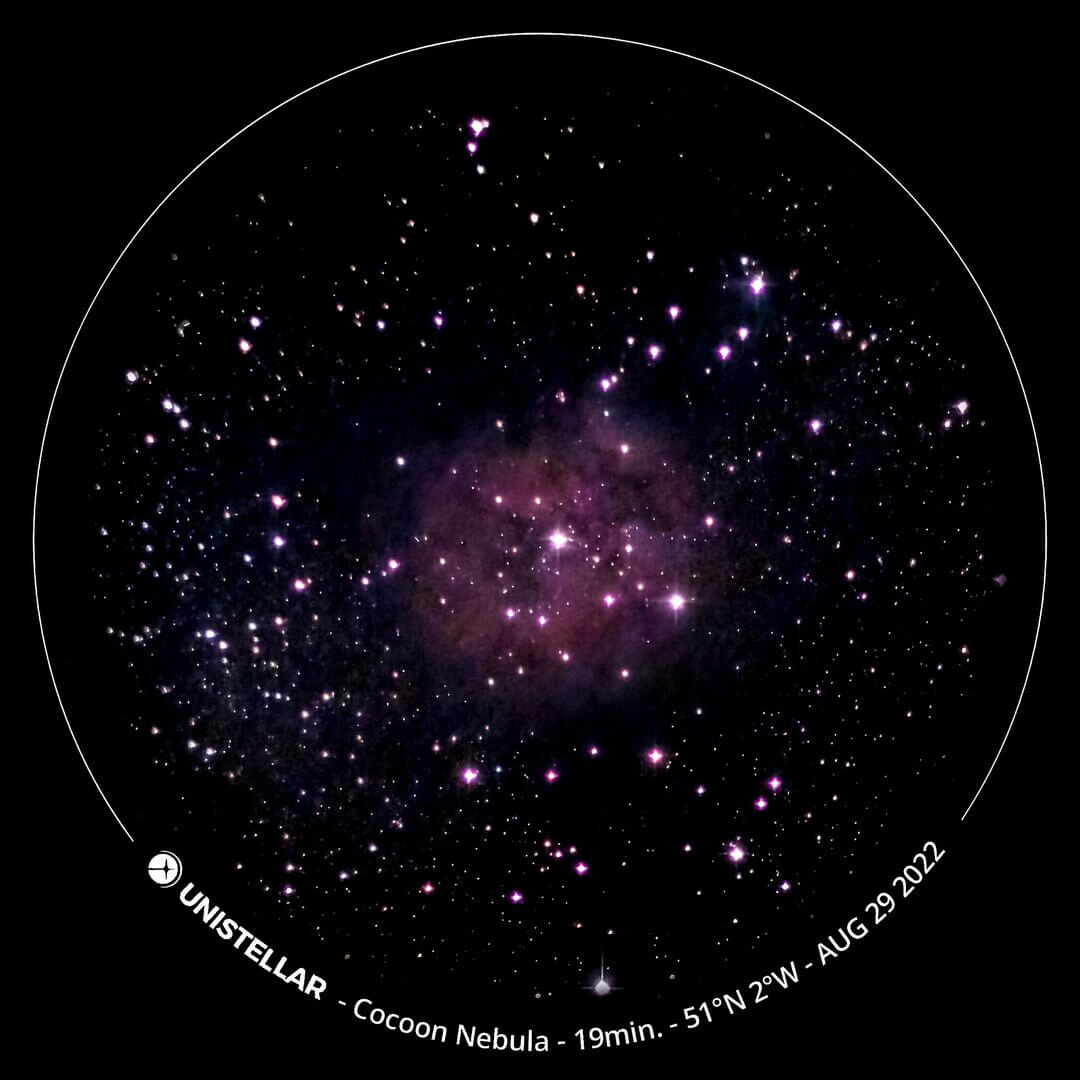
The Cocoon Nebula imaged and processed by David Rowe.
Angelfish Cluster (M71)
Visible from both hemispheres, the Angelfish Cluster in Sagitta straddles the line between an open cluster and a globular cluster. The difference between these two types of cluster is namely their age and concentration of stars – open clusters are not as dense and contain younger stars, while globular clusters contain older, densely packed stars. Scientists eventually settled on designating the Angelfish as a young, loosely concentrated globular cluster. See what you think!
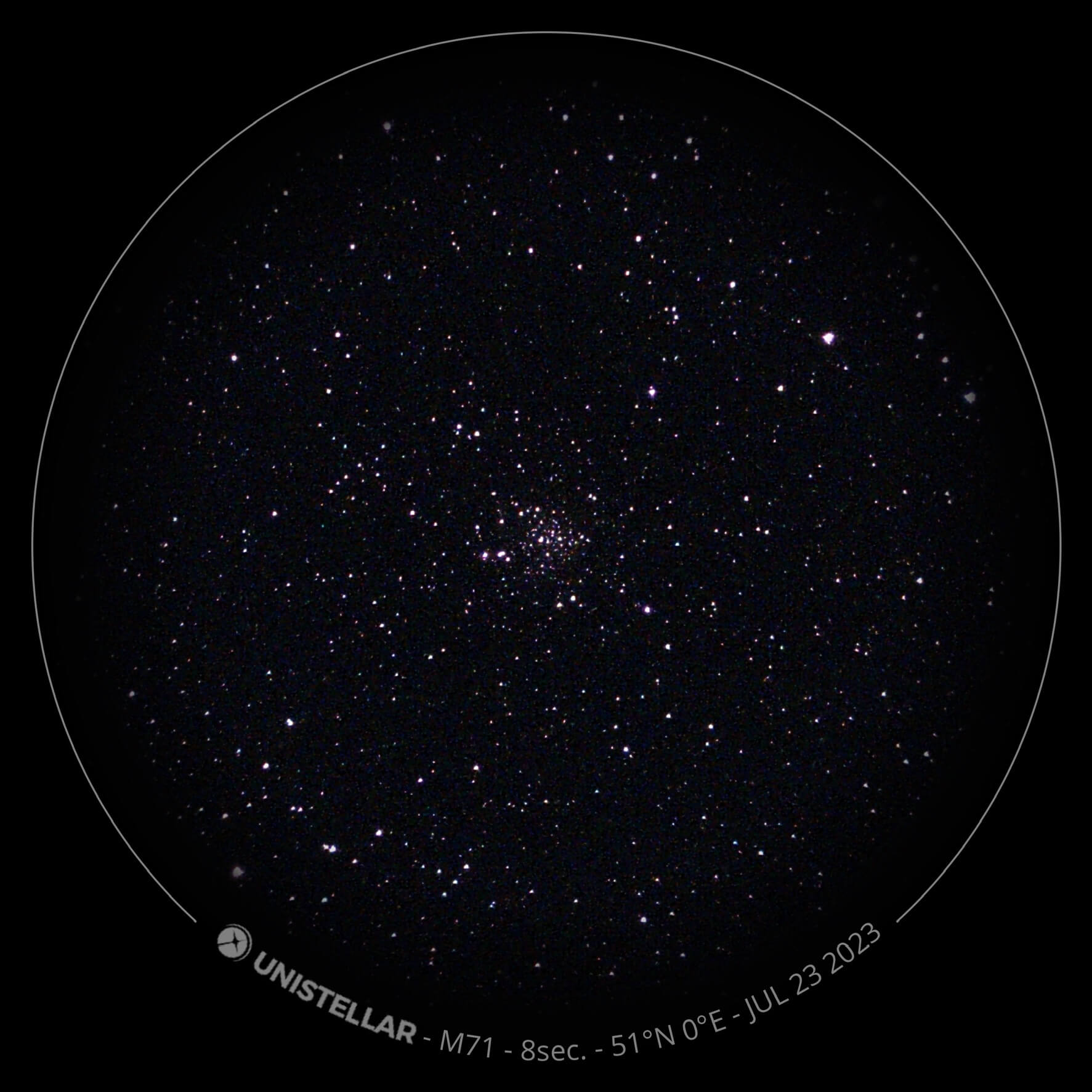
The Angelfish Cluster, imaged by Unistellar observer Emmanuel Marchal.
Summer Beehive (IC 4665)
Not to be confused with the well-loved Beehive Cluster of the constellation Cancer, the Summer Beehive Cluster lies in Ophiucus. This lovely open cluster is often called Poseidon’s Trident Cluster – can you spot this familar shape? Catch it as soon as dark falls from both hemispheres.
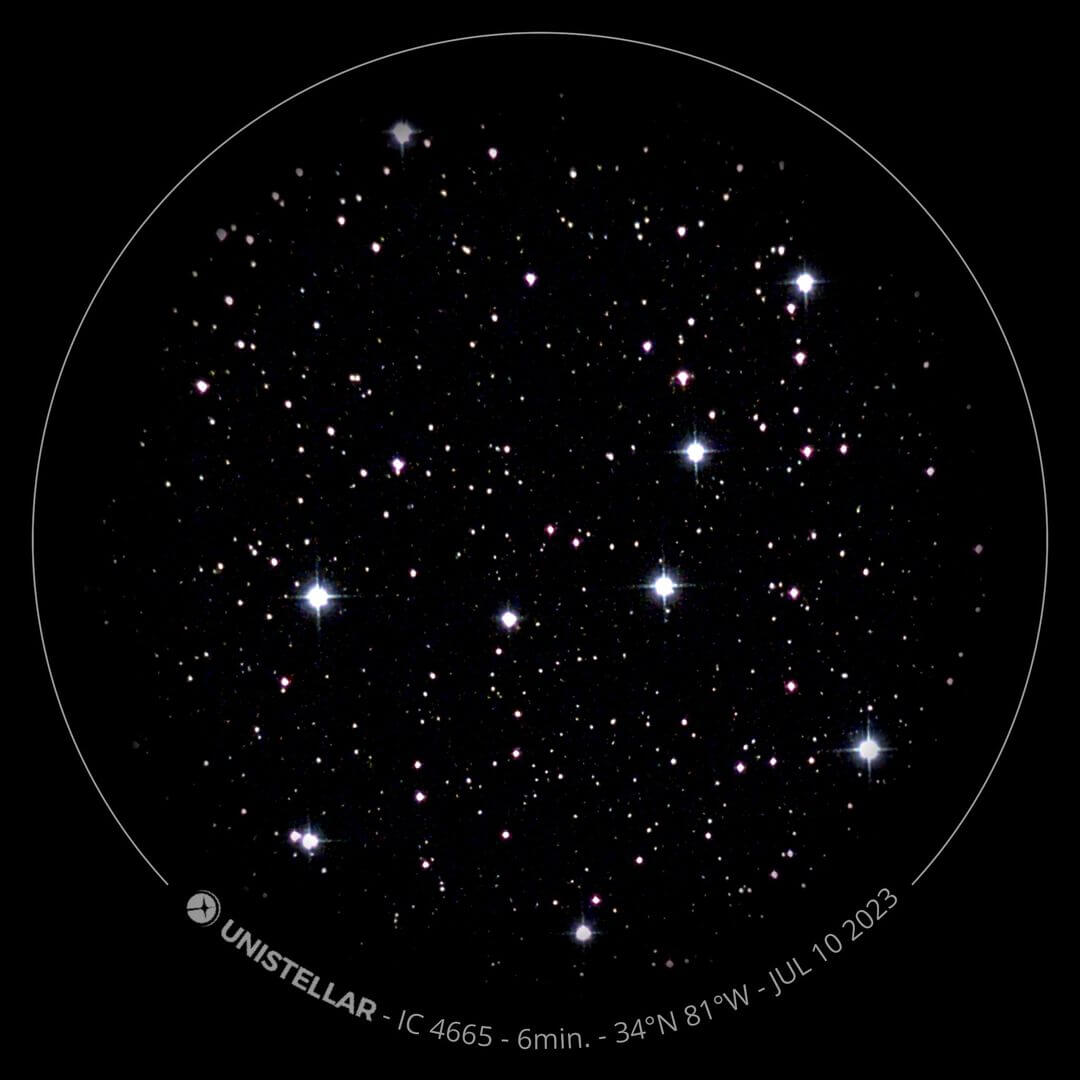
The Sumer Beehive imaged and processed by John Bradley.
There’s plenty of other great targets to see this month. For example, both the Fireworks Galaxy and the Veil Nebula are primely placed in Cygnus, and other dim nebulae like the Little Ring Nebula (NGC 6894) may pose a fun challenge. Check you Unistellar app catalog to see what’s up in the sky!
Challenge Targets
For more challenging targets, find these next three objects! These are dimmer or more diffuse celestial sights that you may need to observe via Enhanced Vision for longer than the ones in the previous section if you want to see all them in all their glory!
The Hole in the Cluster (NGC 6811)
Also known as NGC 6811, this open cluster in Cygnus contains a mysterious absence of stars near its very center. See if you can spot this dim “smoke ring of stars,” and ponder the inky blackness of space!
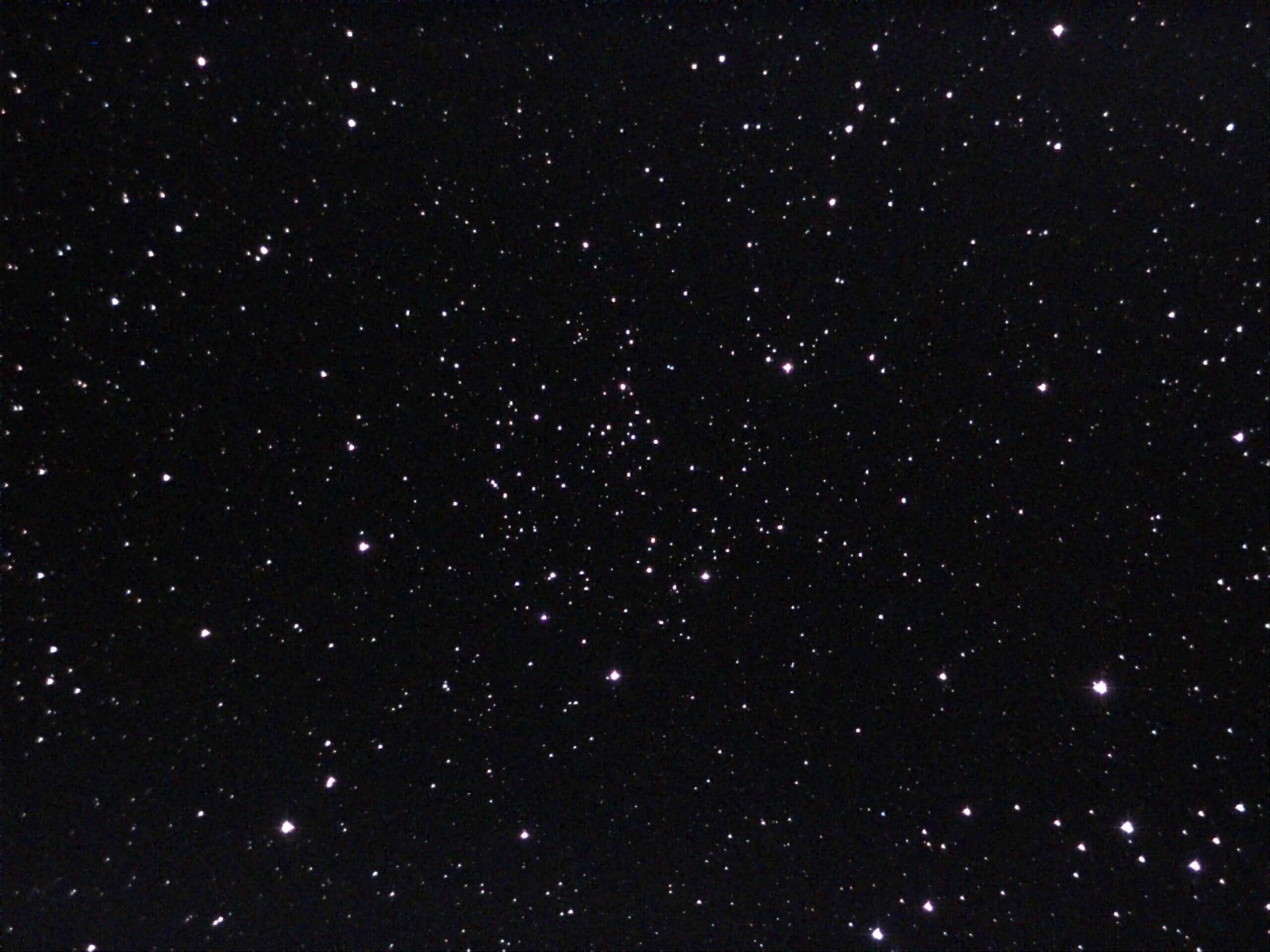
The Hole in The Cluster imaged by the Unistellar team.
Crescent Nebula (NGC 6888)
At the heart of this emission nebula, which also lies in Cygnus, you’ll find a rare Wolf-Rayet star – a massive star that’s been living fast and is on its way to dying hard as it burns heavier elements for fuel after it used up all of its hydrogen. This star emits strong stellar winds that whip the clouds of gas and dust in the Crescent Nebula into complex shapes. After several minutes of Enhanced Vision, you should see its half-circle structure begin to appear!
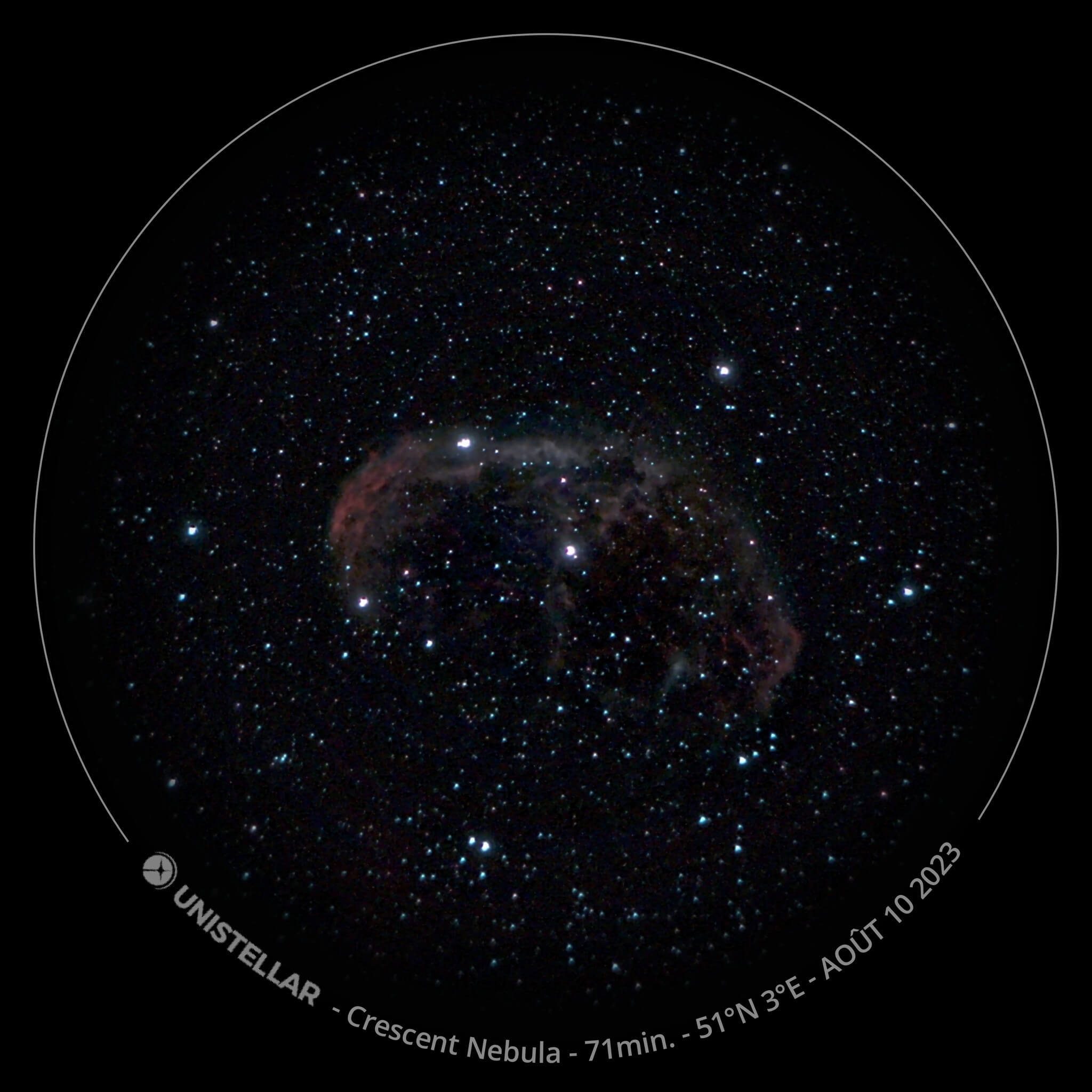
The Crescent Nebula imaged and processed by Matthieu Carbon.
Iris Nebula (NGC 7023)
This reflection nebula glows from within, lit from a star hidden by its gaseous shrouds. Filaments of red indicate an unknown molecule in the Iris Nebula’s clouds, which stretch about six light-years across. This nebula is in the constellation Cepheus, so it’s best seen from the Northern Hemisphere.
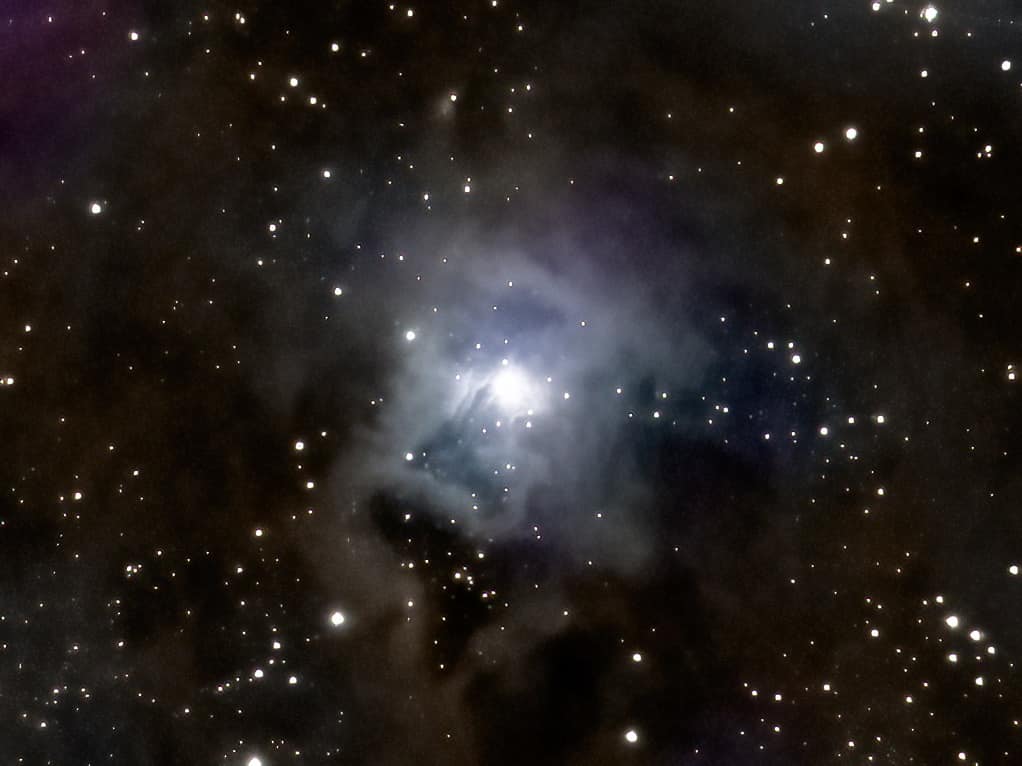
The Iris Nebula imaged and processed by Richard Bright.
NGC 6951
For an additional challenge, look for this barred spiral galaxy in the constellation of Cepheus. Persistence will reward you with views of a less-often-spotted galaxy with a distinct shape that’s home to active star formation. Only visible from the Northern Hemisphere.
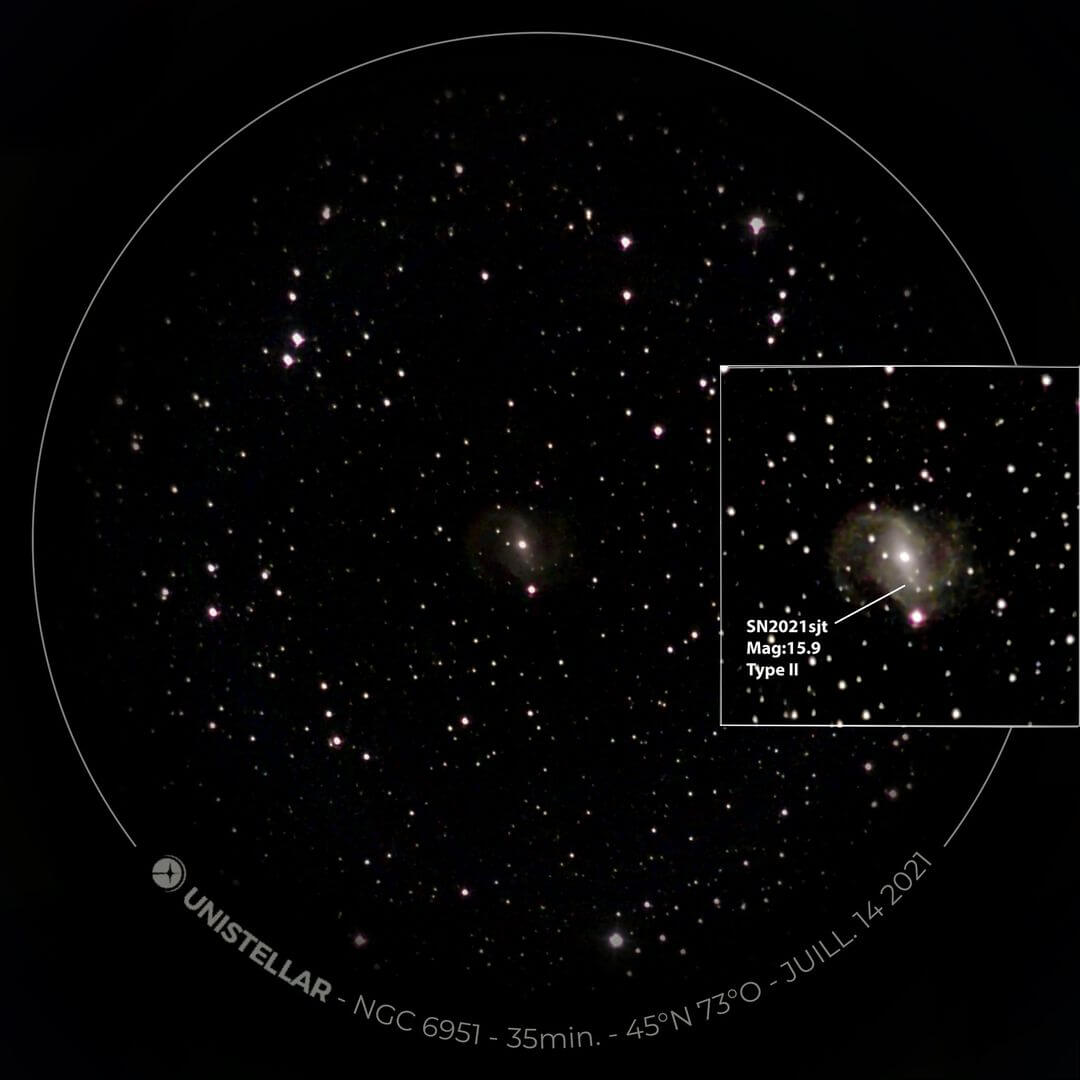
NGC 6951 imaged by Jacques Bérard & Nicole Ruel back in 2021, when a supernova was spotted to have erupted in this galaxy!
We encourage you to share your observations and join the conversation through our Facebook, Instagram and Twitter pages. Don’t forget to tag @Unistellar!
If you’d like to send us your observations by email, send them to [email protected].
Clear skies! 🔭
Further readings
3 Reasons to observe this month
On Jupiter: Imagine moons casting their shadows on a giant planet. Right now, Jupiter’s moons offer an exceptional show: eclipses visible even from urban areas. Each time a moon passes in front of the Sun, it creates a shadow that dances across Jupiter’s surface. Check our dedicated article to catch every passage of Io, Europa, or Ganymede.
Unistellar Community Included In Multiple Scientific Papers
Did you know Unistellar Citizen Astronomers are often cited in published scientific papers? Find out how you can contribute too!
When Is the Next Solar Eclipse, and How to Observe It With a Unistellar Telescope
An annular solar eclipse is visible from the Americas on October 14. Learn how to witness the Ring of Fire with your Unistellar Telescope!
Halloween Observing Guide: Spooky Deep-Sky Objects
These Halloween deep-sky objects will add some light to those dark, spooky nights. Treats, tricks, and telescopes await!
How Big Is the Solar System?
If the Sun were the size of a basketball, do you know how big the Earth would be? Find out how big the Solar System really is!
See OSIRIS-REx, NASA’s First Asteroid Sample Return Mission, as it Drops off Pieces of Asteroid Bennu
NASA's first asteroid return sample mission, OSIRIS-REx, is headed back towards Earth with precious cargo. Join us in observing it Sept. 24!


